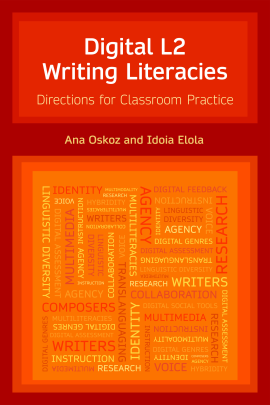
Digital L2 Writing Literacies
The ubiquitous internet and proliferating digital tools have redefined views of literacies and are gradually shaping the L2 curriculum. Today, writing is seen not just as a vehicle for language practice, but as a vehicle that shapes L2 multiliterate writers and communicators in the ever-changing... Read more
Published: 2020
Pages: 300
eBook: 9781781796924
The ubiquitous internet and proliferating digital tools have redefined views of literacies and are gradually shaping the L2 curriculum. Today, writing is seen not just as a vehicle for language practice, but as a vehicle that shapes L2 multiliterate writers and communicators in the ever-changing digital world. Collected in this important book is a wealth of professional knowledge and insight gleaned from years of practice in language teaching and curriculum design for writing and digital literacy, summarized with examples and recommendations, by two of the leading educators and researchers in the field. It is an authoritative and timely work, providing an up-to-date overview of digital writing in L2 contexts, with reflections on its specific applications and potentials as an environment for development of communicative skills and personal expression, and on how digital media have expanded the options for teaching language and writing in particular. It is a learned and highly original work, extensively referenced, showing wide-ranging knowledge of the relevant literature and offering cutting-edge theoretical perspectives on multilingual, multimodal composing. It is also a reader-friendly book, well written and designed to be of value to teachers working with multilingual students in second language, foreign language, and heritage language classrooms. The main chapters are structured to provide the necessary background of definitions, descriptions of practices, and key research findings, along with detailed sample learning projects and ideas for reflection and discussion that those involved in L2 writing should find interesting and relevant. The authors begin with a wide-ranging review of digital tools and environments and how these are influencing communicative modes and written genres. They address how those tools and environments are encouraging interactive and collaborative writing in online environments, innovative multimodal forms of composing such as digital storytelling, and new avenues and modes for expression of multilingual writer voice and identity. They further discuss how feedback, revision, and assessment practices for L2 writing must change to reflect the changing processes and products of digital composing. The content of the book is summarized in models of theoretical and pedagogical factors impacting digital L2 writing and in a future-oriented discussion of L2 writing and digital practices in the 21st century, making for a stimulating set of implications and take-away messages to ponder. For those who are on the fringes as well as those who are at the center of digital practices, the book provides much in the way of continuing education and food for thought. As the most comprehensive and current state-of-the-art treatment of its subject matter, Digital L2 Writing Literacies: Directions for Classroom Practice is simply the must-read book for all those with an interest in L2 writing and language teaching.
| Cover | Cover | ||
|---|---|---|---|
| Contents | v | ||
| Dedication | vii | ||
| Series Editor’s Preface | ix | ||
| Acknowledgements | xi | ||
| Introduction | 1 | ||
| Chapter 1 | 15 | ||
| Chapter 2 | 47 | ||
| Chapter 3 | 76 | ||
| Chapter 4 | 105 | ||
| Chapter 5 | 134 | ||
| Chapter 6 | 167 | ||
| Chapter 7 | 203 | ||
| Concluding Remarks | 231 | ||
| References | 236 | ||
| Author Index | 277 | ||
| Subject Index | 286 |
